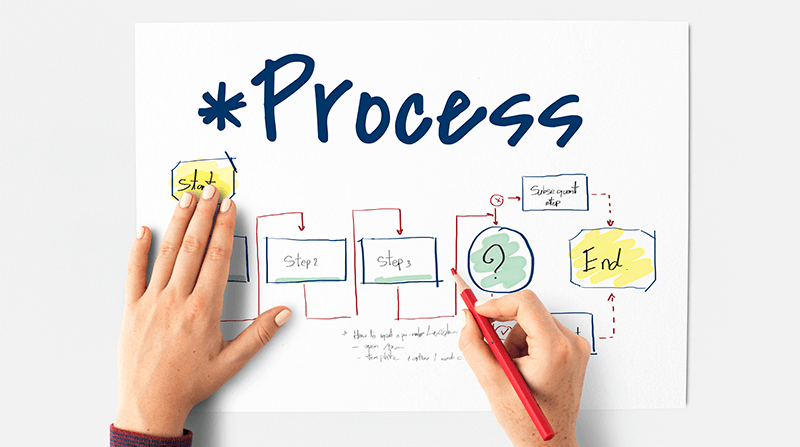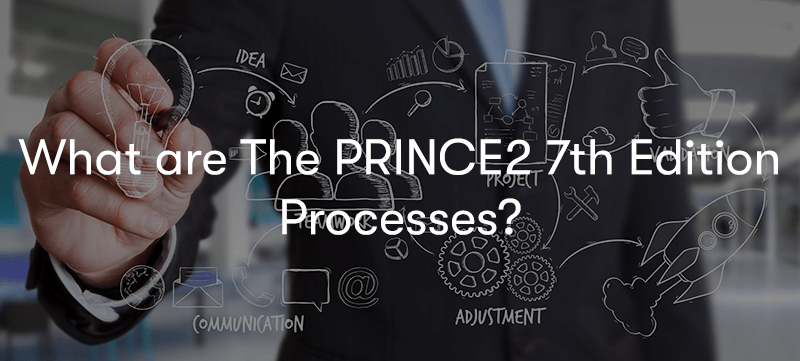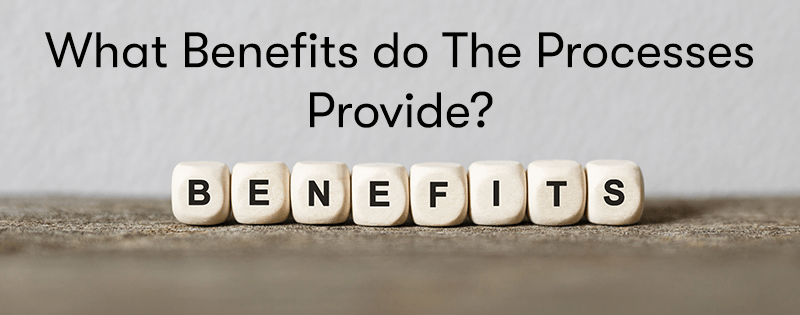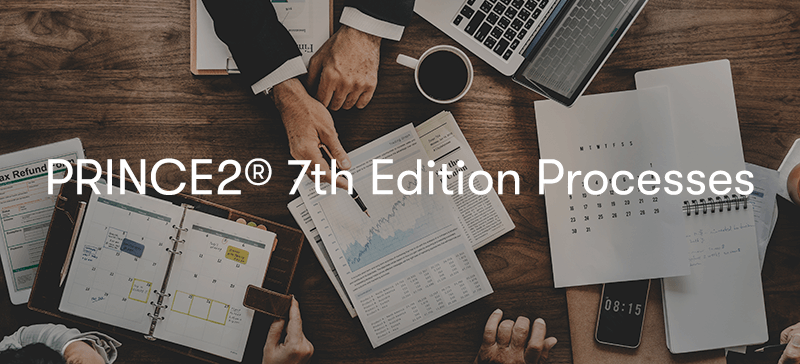PRINCE2® 7th Edition Processes
Welcome to our comprehensive guide on the PRINCE2 7th Edition processes—an essential resource for project management excellence. In this blog, we delve into the intricacies of PRINCE2's meticulously crafted processes, designed to bring structure, clarity, and success to your projects.
From initiating and planning to executing, monitoring, and closing, we'll navigate the diverse landscape of project management with a focus on effective closure, seamless transitions, benefits realisation, and continual improvement. Join us as we explore how PRINCE2 processes can elevate your project management endeavours to new heights.
For more information, please check out our PRINCE2® Foundation (7th Edition) Course.
What are Processes?

PRINCE2 defines Processes as “A structured set of activities that define the sequence of actions and their inputs and outputs to achieve a specific objective”. For more definitions, please check our PRINCE2 7th Edition Glossary.
What are The PRINCE2 7th Edition Processes?
The PRINCE2 7th Edition Processes are:
- Pre-project
- Initiation stage
- Subsequent stages
- Final stage
- Post-project

Pre-project
Prior to the commencement of a project, an individual conceptualises an idea or recognises a necessity. In the PRINCE2 methodology, the catalyst for launching the project, which can manifest in various ways, is termed a project mandate. This project mandate originates from the business entity (the entity overseeing the project) and can assume various forms, ranging from an oral directive to a well-defined and substantiated project outline.
Before embarking on a project formally, it is imperative to evaluate and verify its feasibility. This evaluation takes place during the project initiation phase, during which the project manager and project board are designated, and a project brief along with an initiation stage plan are formulated. The determination to proceed with project initiation rests with the project board, following their distinct project oversight process. Subsequently, the project board assesses the project brief and stage plan to determine the course of action for initiating the project and assigning the necessary personnel and resources.
Initiation stage
Once the decision to move forward with the project has been reached, the subsequent step involves crafting a comprehensive plan at an appropriate level of intricacy. This planning process encompasses the formulation of project management strategies and controls, the creation of a robust business case, and the establishment of mechanisms for assessing benefits. These actions fall within the domain of the project initiation process. Furthermore, during the initiation stage, the procedure of managing a stage boundary is employed to meticulously chart out the forthcoming stage.
The culmination of the initiation stage involves the scrutiny of the project initiation documentation by the project board, who once again employ their distinct procedure to determine whether to authorise the project to proceed, including the subsequent stage. Given that the contents of the project initiation documentation are likely to evolve over the course of the project (subject to change control), this particular iteration is preserved as the original reference point for future evaluations.
Subsequent stages
The project manager is entrusted by the project board to oversee day-to-day operations on a stage-specific basis. The project manager's responsibility encompasses confirming that advancement aligns with the sanctioned blueprint and that projections for the project stay within predefined margins. Routine highlight reports are employed by the project manager to apprise the project board of ongoing progress. The strategies for supervising each stage are encapsulated within the domain of the stage control process.
The project manager is also accountable for assigning tasks to team managers or members, who then execute the allocated work packages. These individuals, in turn, provide the project manager with updates on their progress via checkpoint reports. This facet of operations falls under the jurisdiction of the product delivery management process.
As each stage approaches its conclusion, the project manager seeks authorisation to proceed to the subsequent stage. This is achieved by presenting an evaluation of the current stage's performance, delivering an update on the business case, and meticulously outlining the upcoming stage. The project manager furnishes the requisite data to the project board to facilitate an evaluation of the project's ongoing feasibility and to enable a verdict on authorising the forthcoming stage. Throughout, it remains the duty of the project board to ensure the project's alignment with the overarching business strategy. The procedures governing the management of each stage transition are elucidated within the stage boundary management process.
Final stage
Since a project is a finite endeavour, the process of concluding it begins as the final stage nears its completion.
Throughout the project's duration, there might have been a continuous movement of individual products into operational use. Now, the project board must ensure that each product's recipients are suitably equipped to possess and utilise them over the long term, and that the business is capable of assuming overall ownership of the project's output. If these conditions are met, the project can be officially concluded. In this phase, the project documentation is to be archived, an evaluation of the project's performance vis-à-vis its original plan is conducted, and the personnel and resources tied to the project are released. The closure tasks also encompass validating or revising the post-project benefit review plans, especially for those benefits that can only be evaluated after the project's output has been in use (and hence after the project itself has been closed).
Post-project
While certain advantages might materialise throughout the project's duration, in the majority of instances, a significant portion or all of the benefits will come to fruition once the project reaches its culmination. Consequently, the occurrence of one or more post-project benefits reviews is highly probable. The benefits management strategy of the project will outline the specifics of when and how these assessments should take place, as well as designate the individuals who are tasked with responsibility and accountability for conducting these reviews.
What Benefits do The Processes Provide?

The processes offer several benefits to the project management and execution:
Clarity in Closure and Transition
By commencing the process of closing a project toward its final stage, the project is brought to a well-defined conclusion, ensuring that all loose ends are tied up and resources are appropriately released. This clarity enables a smooth transition from project work to post-project operations.
Effective Product Transition
The process ensures that products developed during the project are effectively transferred into operational use. It guarantees that recipients of these products are capable of owning and utilising them on an ongoing basis, thereby promoting a successful product transition.
Ownership and Accountability
The project board's satisfaction with the recipients' readiness to take ownership of project products ensures that the business can assume overall ownership. This accountability ensures the sustained success and continued functioning of the project's outcomes.
Archiving and Documentation
Archiving project documentation safeguards the project's knowledge, lessons learned, and historical context for future reference. This aids in knowledge retention and provides a resource for future projects.
Performance Evaluation
Assessing the project's performance against its original plan allows for a retrospective analysis of how well the project adhered to its initial objectives and benchmarks. This informs future decision-making and helps identify areas for improvement.
Benefits Realisation
The focus on post-project benefits reviews acknowledges that many project benefits might only be realised after the project's completion. By structuring these reviews, the project ensures that the intended benefits are tracked, measured, and eventually attained.
Structured Management
The delineation of when and how post-project benefits reviews should occur, as well as designating responsibility and accountability, provides a structured approach to benefits management. This ensures that benefits are tracked systematically and that appropriate individuals are involved in the assessment process.
Continual Improvement
By examining benefits post-project and incorporating lessons learned, future projects can be refined and optimised for better benefits realisation. This continuous improvement cycle enhances the organisation's project management practices over time.
Final Notes on PRINCE2 7th Edition Processes
In conclusion, the PRINCE2 7th edition processes offer a meticulously structured approach to project management, ensuring effective closure and transition, ownership accountability, and benefits realisation. By orchestrating well-documented product transitions, performance evaluations, and post-project benefits reviews, PRINCE2 facilitates informed decision-making and continuous improvement. This systematic framework guarantees projects conclude with clarity and seamless integration into post-project operations, aligning with business objectives. In embracing these processes, organisations empower themselves to achieve project success while fostering a culture of refinement and growth.


